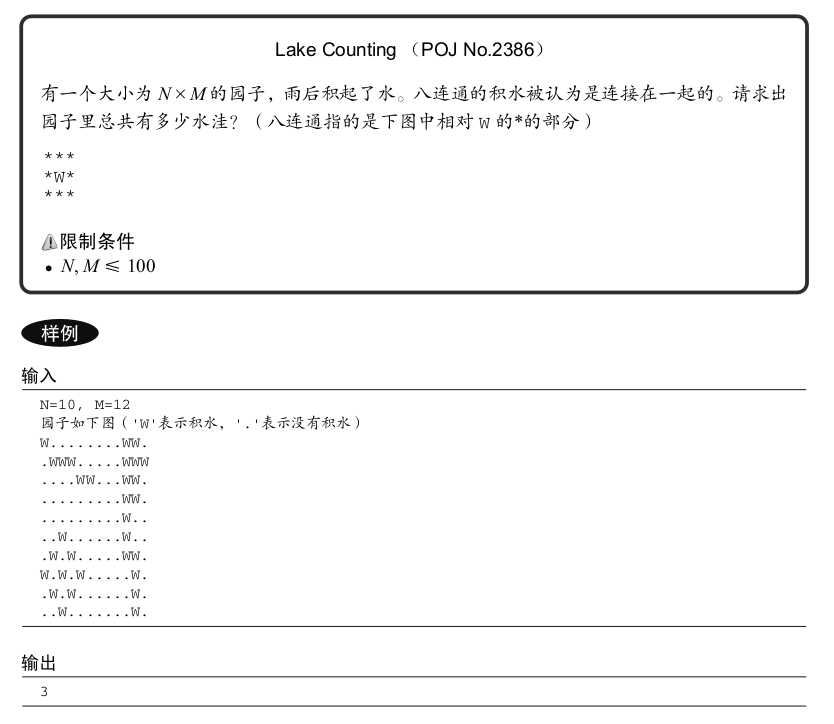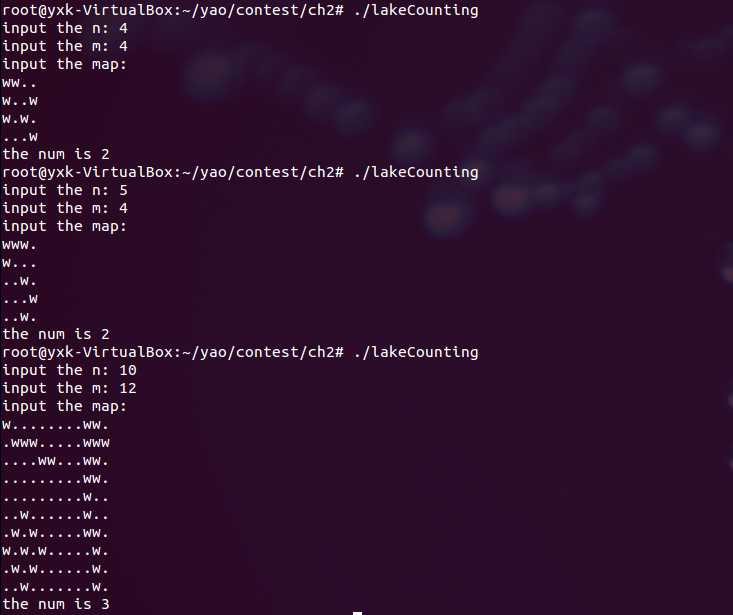标签:

遇到这个题的时候,不太容易快速的想到思路;可能会比较容易想到使用递归的思想;
但是具体怎么写呢?
其实这个题就相当于是图论中的求连通图,很容易应该想到的是深度优先搜索或者是广度优先搜索;
我们就用深度优先算法来求这个题目;
直接求有几个区域不好求,那么我们换个思路来求,这种题就是这样,直接求不好求,但是当我们转换一下思路之后就豁然开朗;
我们遍历所有的点,当遇到有水的点时,就将它周围的(八个方向)所有的水点都消除;所以在主遍历for循环中遇到几个水点就是有几个水洼;
/*************************************************************************
> File Name: lakeCounting.cpp
> Author:
> Mail:
> Created Time: 2015年11月18日 星期三 21时10分13秒
************************************************************************/
#include<iostream>
using namespace std;
const int MAX_N = 100;
const int MAX_M = 100;
char map[MAX_N][MAX_M];
int n, m;
void input_data()
{
cout << "input the n: ";
cin >> n;
cout << "input the m: ";
cin >> m;
cout << "input the map:" << endl;
for (int i = 0; i < n; ++i){
for (int j = 0; j < m; ++j){
cin >> map[i][j];
}
}
}
void output_data()
{
cout << "n = " << n << ", m = " << m << endl;
for (int i = 0; i < n; ++i){
for (int j = 0; j < m; ++j){
cout << map[i][j];
}
cout << endl;
}
cout << endl;
}
void dfs(int x, int y)
{
map[x][y] = ‘.‘;
int tx, ty;
for (int i = -1; i <= 1; ++i){
for (int j = -1; j <= 1; ++j){
tx = x + i;
ty = y + j;
if (tx >= 0 && tx < n && ty >= 0 && ty < m && map[tx][ty] == ‘w‘){
dfs(tx, ty);
}
}
}
return;
}
void solve()
{
int num = 0;
for (int i = 0; i < n; ++i){
for (int j = 0; j < m; ++j){
if (map[i][j] == ‘w‘){
dfs(i, j);
num++;
}
}
}
cout << "the num is " << num << endl;
}
int main()
{
input_data();
//output_data();
solve();
return 0;
}

求水洼的问题(或者是说求图中连通子图的个数)----深度优先算法
标签:
原文地址:http://www.cnblogs.com/yxk529188712/p/4976017.html